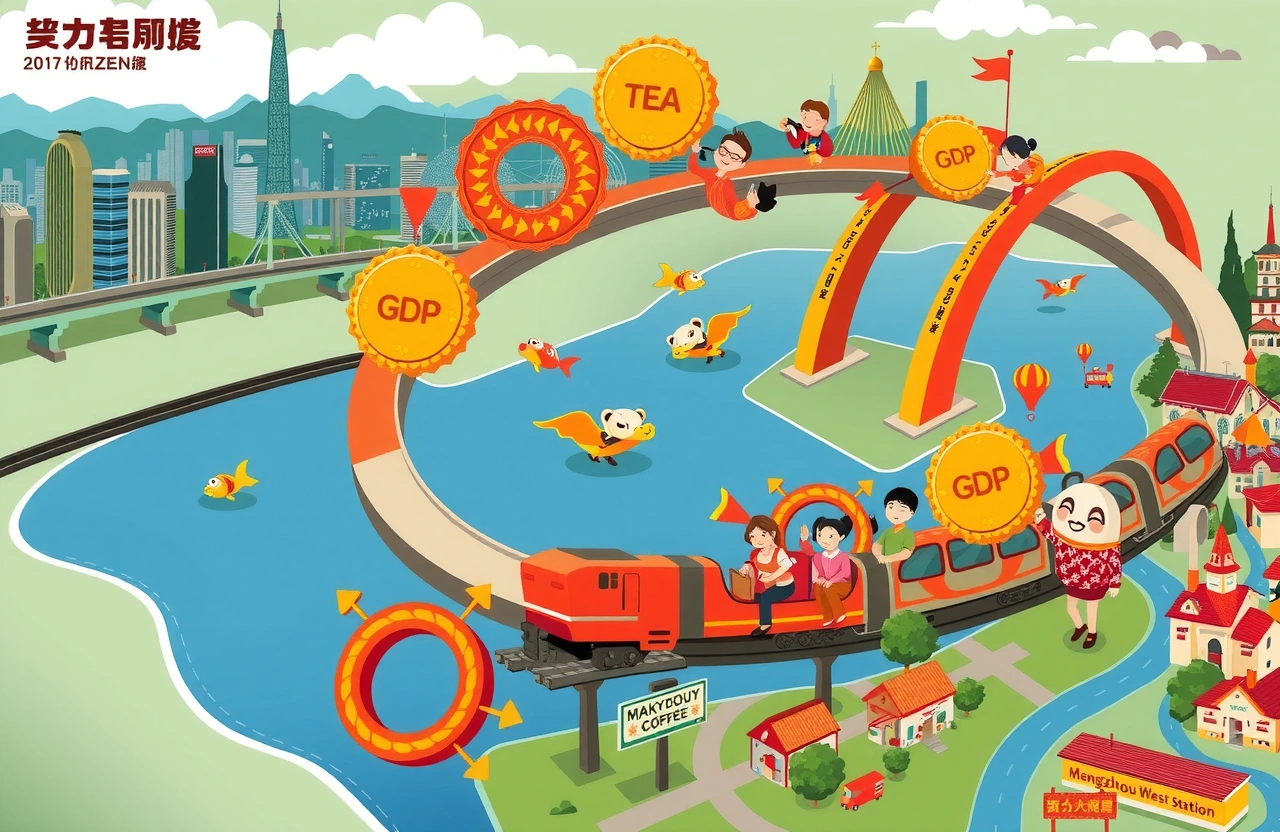A New Era for Guangdong’s Transport Landscape
After years of planning, Guangdong’s groundbreaking high-speed rail loop officially began operations on July 1st. This revolutionary circular route starts and ends at Shenzhen North Station, traversing five key cities—Huizhou, Chaozhou, Jieyang, Meizhou, and Heyuan—in a five-hour circuit.
Unlike China’s predominantly linear rail networks, this high-speed rail loop represents a strategic shift toward integrated regional connectivity. By linking Guangdong’s core economic powerhouse, Shenzhen, with underdeveloped eastern and northern areas, this loop responds to years of imbalanced growth.
Initial scheduling focuses on peak travel periods, acknowledging pent-up demand between Shenzhen and these regional hubs.
Strategic Regional Implications
Aligning with Guangdong’s Development Framework
The route strategically embodies Guangdong’s “one core, one belt, one area” spatial development strategy:
- – The “core” Pearl River Delta represented by Shenzhen and Huizhou
- – Coastal Economic Belt cities Chaozhou and Jieyang
- – Northern Ecological Zone anchor points Meizhou and Heyuan
The economic gap remains stark. Shenzhen’s 2024 GDP reached 3.68 trillion yuan while the combined output of Huizhou, Chaozhou, Jieyang, and Meizhou totaled just 1.16 trillion yuan. As explained by Gu Zhengjiang (顾正江), Shenzhen New Urban Planning deputy chief planner: “Transportation deficits in eastern/northern areas constrained the Greater Bay Area’s development capacity.”
Historical Infrastructure Efforts
- – 2013: “Revitalization Plan for Guangdong East-West-North” prioritized infrastructure and industrial parks
- – 2014: Provincial urbanization strategy emphasized connectivity to balance regional development
The trajectory of the high-speed rail loop—fanning northeast from Shenzhen before curving northwest—physically stitches these three zones together.
Tourism Transformation Through Connectivity
Dubbed the “Golden Tourism Corridor”, this route creates a weekend excursion circuit linking:
- – Huizhou’s West Lake
- – Chaozhou Ancient City and Guangji Bridge
- – Jieyang’s Rongjiang waterways
- – Meizhou Hakka Tulou villages
- – Heyuan’s Wanlv Lake
According to Liu Jiewu (刘杰武), Shenzhen University tourism researcher: “It creates a viable weekend trip ecosystem. Easier access boosts travel frequency catalysing underdeveloped regions’ tourism.”
Optimizing Regional Rail Architecture
The loop directly addresses structural flaws in Pearl River Delta rail networks. Liu notes: “Existing radial networks lacked effective connections. Passengers wasted time transferring.” Beyond convenience, the loop elevates Shenzhen as a eastern-focused transportation hub.
Meeting Peak Passenger Demands
Migration Patterns Drive Demand
Dai Jifeng (戴继锋), deputy director of China Academy of Urban Planning’s Shenzhen branch, emphasized demographic realities. “High-frequency movement between Shenzhen and eastern/northern cities necessitated this loop due to economic disparities driving labor migration.” Consider:
- – Jieyang migrants total 1.43 million residents, with Shenzhen absorbing 21.52%
- – Similarly, Meizhou exports workers predominantly to Shenzhen
- – Baidu migration data shows travel surges around Lunar New Year
Daily ticket shortages reflect chronic infrastructure gaps. Dai observed: “Friday evening tickets vanish instantly. Planning ahead became essential.”
Peak-Hour Operational Strategy
The loop’s scheduling responds to passenger behaviors:
- – Demand clusters around mornings and evenings
- – Mid-day slots see lighter use
Media outlets repeatedly documented capacity strains during holidays.
Socioeconomic Impacts and Strategic Concerns
Growth Versus Resource Siphoning
While enhancing mobility, experts caution against disproportionate benefits. Gu Zhengjiang warns: “Improved access without proportional development triggers talent flight toward Shenzhen. Rural economies risk stagnation without distinctive advantages.”
Transit-Oriented Development Deficits
Infrastructure integration lags in recipient cities. Gu used Meizhou West Station as an example:
- – Surrounding industrial planning remains fragmented
- – Single-line links to urban centers limit dispersion
- – Rail station economic potential remains untapped
Unlike oversaturated real estate-driven “rail towns”, Gu recommended: “Industrial ecosystems must precede downstream benefits. Skilled workforces and specialized clusters attract enterprises.”
Sustainable Integration Pathways
Peripheral cities require intentional positioning:
- – Pursue industrial niches complementing Shenzhen’s tech hubs
- – Co-develop tourism circuits leveraging cultural uniqueness
The high-speed rail loop isn’t a comprehensive solution but accelerates practical cooperation. For instance, Chaozhou could supply semiconductor component manufacturing while Meizhou develops Hakka cultural tourism.
The Path Forward for Regional Integration
Strategic implementation remains vital for balanced growth using Guangdong’s high-speed rail loop. Invest firsthand exploring these newly-connected cultural gems. Visiting Chaozhou Ancient City or Meizhou Tulou villages fuels localized tourism economies. Support initiatives advocating smarter transit-oriented development beyond rail corridors.
Success ultimately depends on coordinated action:
- – Municipalities optimizing infrastructure around stations
- – Policies incentivizing regional talent retention
- – Joint tourism branding across cities
The loop provides mobility; collaboration provides vitality.




